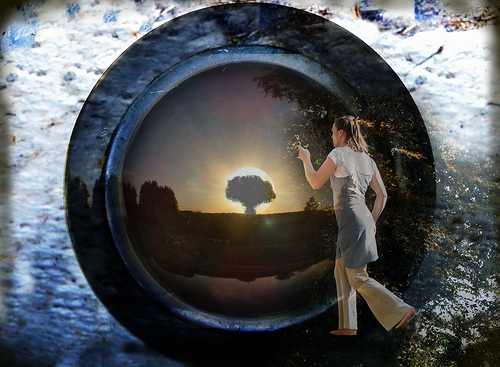Finding a Place for a Daydream
A quick interruption before we dig in to today’s post. Today is the last day to vote for your favorite writing blog on Write To Done. If you have enjoyed and benefited from Live Write Thrive this year and want to tell others about all the great free content on this site, please take a moment to vote for this blog! All you need to do is put in a comment and give the link to Live Write Thrive. My deepest thanks to all of you who voted last year and helped award my blog with the honor of being one of the top ten blogs for writers in 2012! Click on the link here!
And now, let’s get into our last blog post in our Shoot Your Novel course!
Last week we started talking about movies that play in our heads. For some of us, perhaps, much of our life is spent envisioning the future and all its “what ifs” or replaying like a broken movie reel the troubled or glorified days of our past. And because we want the characters in our novels to seem as real and believable as possible, they can daydream too. By creating a kind of movie playing in a character’s head, it can emulate in a way what we do perhaps daily, without even noticing.
Daydreaming Is a Part of Life
I imagine if we really paid attention, we’d see how we spend numerous hours of each day imagining ourselves in scenes—whether events that have happened to us or imaginary ones, like the one Goldman created for his character Levy in the novel Marathon Man, which we looked at last week. Novelists often go deep into POV, showing their character thinking about things and reacting to what is happening in the present scene.
Using deep POV is not only common but considered the way great novels are now mostly written. However, often these internalized thoughts and responses, although frequently effective, are not cinematic. And there’s nothing wrong with that.
But what if you chose two or three scenes in which your character is thinking about something and instead played out her thoughts cinematically, the way Goldman did, and the way we often do in real life? Have your character envision a “what if” and play out her dream in her head with her in the starring role. Or if it’s crucial she reflect on a past hurt or a key moment in her childhood that gives an important clue in the novel, replay it in her head, even have her watch herself and notice things she may have missed before. But make it cinematic, visual. Let the reader “watch” her in that scene.
Watch That Backstory
You could consider this backstory or a flashback, and so you want to be careful you don’t spend so much time in the “past recollection” that you are neglecting the present scene action. You don’t want to start your novel in one place and time, only to jerk the reader to some other past situation. You want to ground your reader right away in the “now” moment the novel opens with. That’s why so many instructors say “no backstory in the first thirty pages” of a novel. If you go back to last week’s post and reread the excerpt, you will notice Goldman doesn’t go into backstory. He has a short mention of a degree Levy got at Oxford. And he creatively describes his character while staying in Levy’s POV (which is cleverly done). But the rest is Levy daydreaming while he’s running through Central Park.
The movie, in my opinion, could have shown this better. Rather that start with the film clip of Bikila winning the marathon, then just showing Levy running, there could have been clips in a montage of Levy’s dream win interspersed with his pounding the pavement. But I didn’t get to write the screenplay . . .
Play Out the Dreams
Since it’s so important to make clear your characters’ core needs and dreams in a novel, think about using this cinematic technique of “playing out” that dream or need in their heads in cinematic fashion. With a mystery/suspense novel, writers have plenty of opportunities for their detectives or others investigating and searching for clues to picture what may have happened at a crime scene or in an attempt to outthink a killer or kidnapper. Instead of just having your character think about all the clues, why not try shooting the “what if” in your character’s head? It will help not just him but your reader to visualize it so much better. And it will give a lasting cinematic quality to your scene that will not be so easily forgotten.
All Good Things Must Come to an End
With ending this look at cinematic technique as it pertains to daydreaming, we have covered a full course on cinematic secrets that novelists can use. No doubt there are many more that could be explored, but after so many months looking at camera shots and filmmaking technique, you should have your writers’ toolbox overflowing with ideas.
I hope you have enjoyed this year-long look at cinematic technique, and you now look at the craft of novel writing in a whole new light. If you’ve missed any posts, you can go back to the first week of January and read through them all, until Shoot Your Novel is out in book form (sometime in 2014).
Any comments you’d like to share about some of the cinematic technique you’ve learned through these posts? How has this changed the way you write or plot our your scenes? Is there one particular camera shot you like to use in your novels? Let’s hear it!












Hi CS,
I’d been waiting for 2012 and 2013 posts to be made in novel as you indicated in both the years. These are awesome posts and i know when you put them into a book, they will be better. Let us know when you are planning to release these?
Hi Aniket, thanks. The Heart of Your Story will be out in about a month, and Shoot Your Novel this fall. I’ll be announcing!
Cool waiting for them 🙂